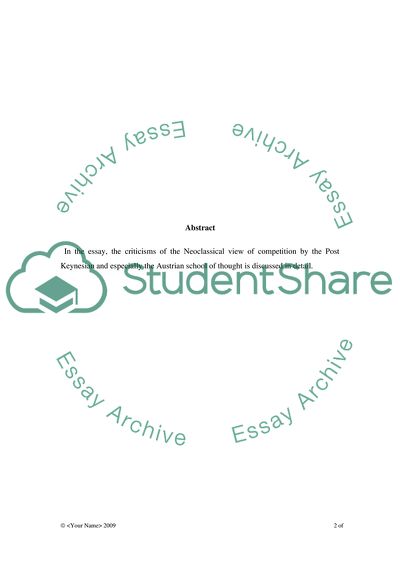Cite this document
(Neoclassical View of Competition Case Study Example | Topics and Well Written Essays - 1750 words, n.d.)
Neoclassical View of Competition Case Study Example | Topics and Well Written Essays - 1750 words. Retrieved from https://studentshare.org/macro-microeconomics/1731558-assess-the-significance-of-post-keynesian-and-austrian-criticisms-of-the-standard-neoclassical-view-of-competition
Neoclassical View of Competition Case Study Example | Topics and Well Written Essays - 1750 words. Retrieved from https://studentshare.org/macro-microeconomics/1731558-assess-the-significance-of-post-keynesian-and-austrian-criticisms-of-the-standard-neoclassical-view-of-competition
(Neoclassical View of Competition Case Study Example | Topics and Well Written Essays - 1750 Words)
Neoclassical View of Competition Case Study Example | Topics and Well Written Essays - 1750 Words. https://studentshare.org/macro-microeconomics/1731558-assess-the-significance-of-post-keynesian-and-austrian-criticisms-of-the-standard-neoclassical-view-of-competition.
Neoclassical View of Competition Case Study Example | Topics and Well Written Essays - 1750 Words. https://studentshare.org/macro-microeconomics/1731558-assess-the-significance-of-post-keynesian-and-austrian-criticisms-of-the-standard-neoclassical-view-of-competition.
“Neoclassical View of Competition Case Study Example | Topics and Well Written Essays - 1750 Words”. https://studentshare.org/macro-microeconomics/1731558-assess-the-significance-of-post-keynesian-and-austrian-criticisms-of-the-standard-neoclassical-view-of-competition.


